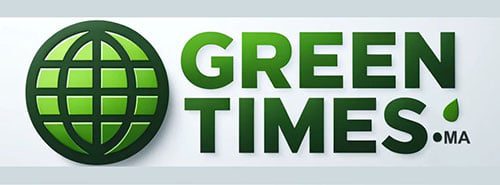The Economic, Social and Environmental Council (CESE) has recommended the establishment of a national value chain dedicated to electrical and electronic waste.
“Electrical and electronic equipment plays an important role in several sectors such as industry, health, mobility, education, communication, etc. Their usage, which is rapidly expanding, is accompanied by a swift increase in the resulting waste (WEEE), the volume of which rose to 177,000 tons in 2022 and could reach 213,000 tons by 2030,” explains the CESE in its latest opinion.
This evolution, while raising significant environmental and health challenges, also represents a source of materials that can be recovered and recycled locally for the benefit of the economy and sustainable development, the CESE believes in this opinion titled “Towards a circular economy of electrical and electronic equipment: from waste to resource.”
This document is part of the continuity of the work carried out by the CESE on the theme of the circular economy, notably its opinion on “the integration of circular economy principles in the treatment of household waste and wastewater,” adopted in 2022.
Beyond simply reducing the pollution generated by this waste, exploiting the potential represented by electrical and electronic equipment waste (WEEE) constitutes a major strategic opportunity.
Their recycling indeed allows for the recovery of valuable or reusable materials (such as rare metals, copper, or plastics) that can be reinjected into production chains, the Council explains, noting that this valorization contributes both to preserving natural resources and to developing innovative and local industrial sectors, sources of jobs and added value.
However, this potential remains largely underutilized, with only 13% of waste recycled in 2020, due to several factors. The current legal framework, poorly adapted, limits the emergence of a structured, sustainable, and competitive sector.
“Public and private initiatives, for their part, remain fragmented, due to a lack of a common vision and sufficient coordination among the various stakeholders involved,” notes the CESE. Added to this is the strong predominance of the informal sector, which diverts a significant portion of flows to unregulated circuits, resulting in substantial losses of strategic resources.
From this diagnosis, the Council emphasizes, in this opinion, the importance of establishing a national value chain dedicated to electrical and electronic equipment waste, based on the principles of sustainability, responsibility, and economic viability. This sector should serve as a structuring lever for the national strategy for transitioning to a circular economy, which it had previously called for in terms of design and implementation.
The development of this sector should rely on an integrated approach, designed collaboratively with the relevant stakeholders, covering the entire life cycle of electrical and electronic equipment, from their design to their valorization. A set of recommendations has been issued in this regard, including the establishment of a legal framework defining the commitments of producers and distributors.
This framework should integrate eco-design principles, impose strict requirements for durability and reparability, and organize the systematic take-back of end-of-life equipment. It will also clarify the roles and responsibilities of the various stakeholders to fully involve them in the structuring, financing, and management of the systems for collecting, sorting, dismantling, and valorizing WEEE.
It is also necessary to integrate, into the legal framework, categories of waste currently not taken into account, notably photovoltaic panels, as well as equipment related to electric and hybrid mobility, in order to ensure comprehensive and coherent coverage of all concerned equipment.
The CESE also recommends implementing eco-design principles, imposing strict requirements for durability and reparability, and organizing the systematic take-back of end-of-life equipment, within the framework of the principle of “extended producer responsibility,” while clarifying the roles and responsibilities of other stakeholders, particularly local authorities and public establishments.
There is also a need to develop a standardized nomenclature of WEEE components, accompanied by a national inventory of the strategic materials and minerals they contain, in order to ensure traceability throughout the treatment chain and facilitate their reuse in national industrial production circuits.
Furthermore, the CESE recommends establishing financial and fiscal incentives aimed at stimulating the WEEE recycling sector and supporting all stakeholders involved (producers, distributors, recyclers, and innovators), as well as adapting landfills into regulated sorting and dismantling platforms, particularly for WEEE, by developing rigorous specifications setting demanding health, social, and environmental standards.
It is also about structuring and professionalizing the informal activity related to WEEE by integrating this workforce into cooperatives or economic interest groups (GIE), and imposing mandatory labeling on electrical and electronic equipment stating “do not throw away,” a reparability score indicating how easily the product can be dismantled, repaired, and maintained, as well as the possible presence of hazardous substances.
The CESE also recommends establishing regional and African partnerships, in order to pool collection efforts, achieve a critical mass sufficient to make treatment infrastructures profitable, and build an integrated regional value chain in the field of WEEE recycling.


